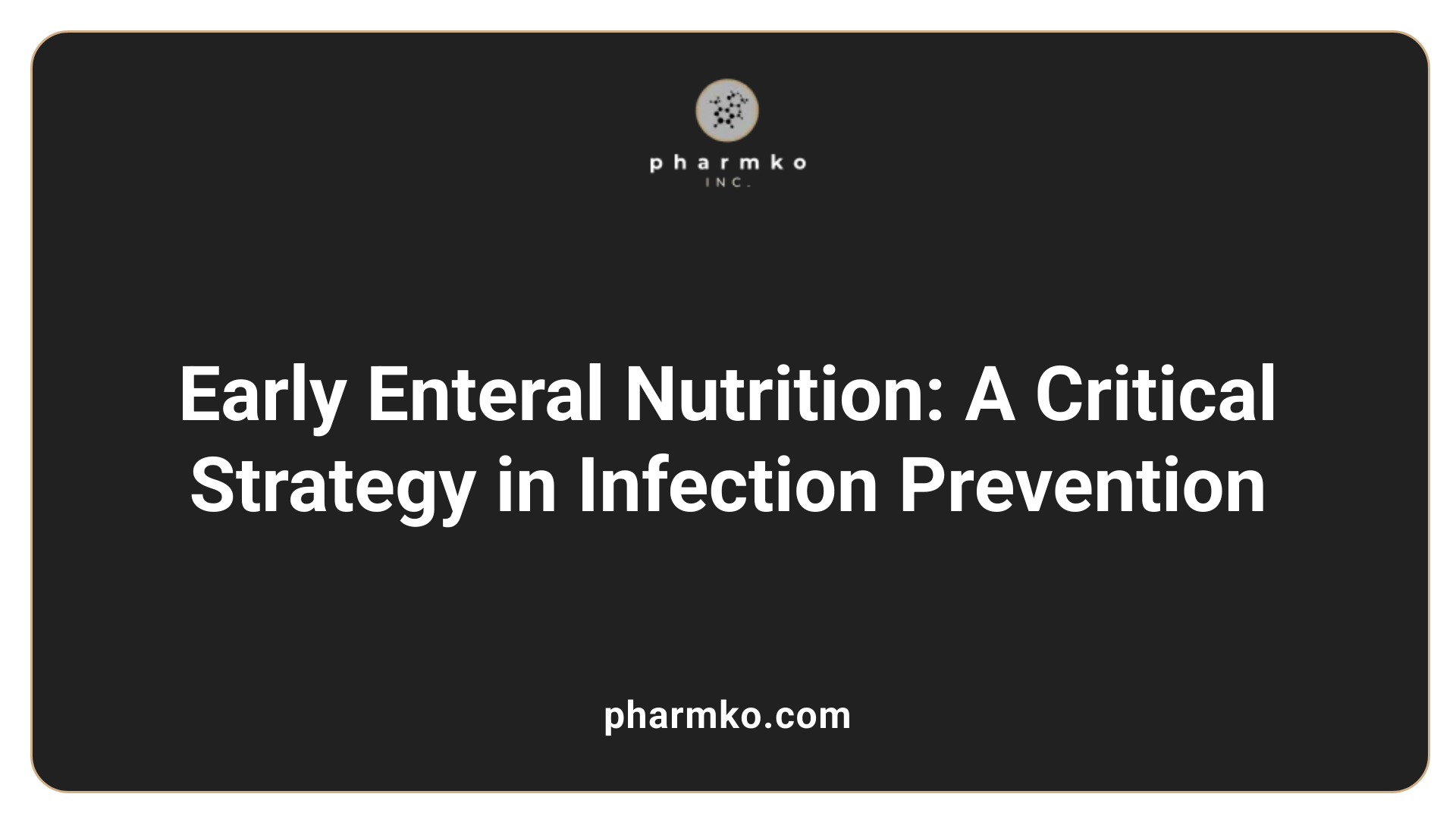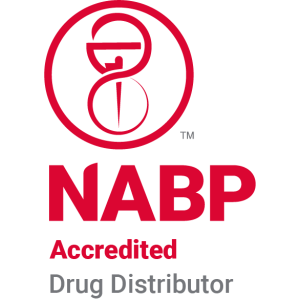How to Prevent Infections in Patients Receiving IPN
Understanding the Foundations of Infection Prevention in IPN
Infected Pancreatic Necrosis (IPN) poses significant challenges in healthcare, often leading to severe complications if not effectively managed. Preventing infections in patients receiving IPN is critical, necessitating a multidisciplinary approach grounded in evidence-based practices, advanced diagnostics, and rigorous infection control protocols. This article explores strategies to minimize infection risks, utilizing state-of-the-art biomarkers, risk assessment tools, and standardized prevention measures. With a focus on healthcare personnel training, antimicrobial stewardship, and the integration of WHO and CDC guidelines, clinicians can optimize patient safety, reduce healthcare-associated infections, and improve overall outcomes.
Utilizing Biomarkers and Scoring Systems for Early Infection Prediction

How can healthcare providers assess the risk of infection and utilize predictive markers for early detection?
Healthcare providers can improve early detection of infected pancreatic necrosis (IPN) by combining clinical assessment with laboratory biomarkers and scoring systems. Key biomarkers such as C-reactive protein (CRP), procalcitonin (PCT), interleukins-6 and -8 (IL-6, IL-8), and angiopoietin-2 (Ang-2) provide valuable insights into ongoing inflammation and infection.
Angiopoietin-2, in particular, has demonstrated a strong predictive capability, with a cut-off value at 4.51 mg/L offering better prediction than some traditional markers. Elevated PCT levels (>0.05 ng/mL) and increased white blood cell (WBC) counts (≥9.95×10^9/L) are also associated with higher infection risks.
To refine risk assessment, clinicians often employ scoring systems like the Acute Physiology and Chronic Health Evaluation II (APACHE II), the Pancreatitis Activity Scoring System (PASS), and its modified version, mPASS-4. These tools incorporate multiple physiological parameters and laboratory data to predict the likelihood of IPN, facilitating timely interventions.
Monitoring trends in biomarkers over time, in conjunction with these scoring systems, allows for dynamic risk stratification. This combined approach supports early decision-making about interventions, potentially reducing complications and improving outcomes.
What are the most effective biomarkers for predicting infection recurrence following minimally invasive IPN treatment?
Serum procalcitonin (PCT) and WBC count stand out as highly sensitive and specific indicators for predicting infection recurrence post-minimally invasive treatments for IPN. For example, a procalcitonin level at or above 0.05 ng/mL, along with a WBC count exceeding 9.95×10^9/L, significantly correlates with the risk of recurrence.
These markers aid clinicians in identifying patients at high risk for recurrent infections, guiding critical management decisions such as the timing of catheter removal. Proper interpretation of biomarker levels helps prevent premature removal that could lead to re-infection or unnecessary prolongation of invasive procedures, both of which carry their own risks.
Early Nutritional Strategies and Their Impact on Infection Prevention

What best practices are effective for preventing infections in patients receiving specialized medical interventions or therapies?
Implementing early enteral nutrition is a vital aspect of infection prevention strategies. When patients are able to receive nutrition via the gastrointestinal tract promptly, it helps maintain gut integrity and prevents bacterial translocation, which can lead to infections such as infected pancreatic necrosis (IPN).
Compared to total parenteral nutrition (TPN), early enteral feeding has shown to significantly reduce the occurrence of infections in hospitalized patients. Enteral nutrition supports the immune system, preserves the natural barrier of the gut, and reduces systemic inflammatory responses.
In clinical practice, ensuring the timely initiation of enteral support, using appropriate formulations, and monitoring tolerance are considered best practices. These measures not only enhance patient recovery but also serve as an essential component of infection prevention in the context of complex therapies.
Nutritional support is increasingly recognized as a cornerstone of infection control protocols. Proper nutritional management in patients undergoing interventions, such as surgeries or treating infected necrosis, sustains immune defenses and fosters faster healing, thereby lowering infection risks.
In summary, prioritizing early enteral nutrition over alternative methods like TPN aligns with current evidence-based practices aimed at reducing infection rates and improving clinical outcomes.
Infection Control Protocols and Standard Precautions in IPN Management

What best practices are effective for preventing infections in patients receiving specialized medical interventions or therapies?
In patients undergoing complex or invasive treatments, strict adherence to infection prevention protocols is necessary. Fundamental practices include thorough hand hygiene, which reduces microbial transmission during all patient interactions. Proper use of personal protective equipment (PPE), such as gloves, gowns, masks, and eye protection, forms a critical barrier against infection. During invasive procedures like catheter insertions or surgeries, applying maximal sterile barrier precautions and skin antiseptics such as chlorhexidine are essential steps. Sterilization of medical equipment, routine environmental cleaning, and safe disposal of contaminated linen and waste further reduce infection risks. Regular maintenance and sterilization of devices, alongside environmental hygiene practices, are vital in preventing device-associated infections.
What measures are recommended to prevent infections in neonatal and critical care settings?
In neonatal and intensive care units, infection control emphasizes meticulous hand hygiene and aseptic techniques to prevent pathogen transmission to susceptible infants. Daily assessment of catheter sites and prompt removal of unnecessary invasive devices are crucial to reduce neonatal bloodstream infections. Environmental disinfection, especially of surfaces and shared equipment, plays a significant role in limiting microbial spread. Employing antimicrobial-impregnated dressings on catheters and other device sites offers additional protection. Careful management of patient surroundings, including isolation of infected newborns when necessary, helps contain infection outbreaks. Overall, a multimodal approach involving staff education, routine monitoring, and strict adherence to established protocols effectively reduces infection rates in these vulnerable populations.
Training and Education for Healthcare Workers in Infection Prevention
What educational resources and training are effective for healthcare workers to improve infection prevention and control?
Providing effective training is vital for healthcare workers to master infection prevention and control (IPC) measures. A combination of various educational strategies ensures comprehensive understanding and practical application.
In-person workshops are practical, interactive sessions where healthcare workers can learn hands-on skills, practice proper procedures, and clarify doubts in a real-time environment. These workshops foster team cohesion and immediate feedback.
Online modules and e-learning courses offer flexible, accessible education that can be tailored to specific roles or topics within IPC. They enable workers to learn at their own pace and revisit materials as needed, making continuous learning feasible.
Simulation exercises are a highly effective method, allowing staff to practice infection prevention techniques, such as PPE donning and doffing, in a controlled, realistic setting. This experiential learning enhances preparedness for actual clinical situations.
Webinars and virtual seminars provide opportunities for updates on emerging threats, guidelines, and best practices. They facilitate ongoing education and discussion with experts, even across different locations.
Organizations like the CDC and Association for Professionals in Infection Control and Epidemiology (APIC) develop comprehensive educational materials—fact sheets, infographics, manuals, and interactive courses—that support these varied learning formats. These resources are evidence-based, user-friendly, and designed to maximize engagement.
Ultimately, combining face-to-face training, digital learning, practical simulations, and expert-led webinars creates a robust educational environment. This approach helps healthcare workers understand, implement, and sustain effective infection control practices, reducing the risk of healthcare-associated infections.
For more guidance, searching for "Effective training for infection prevention in healthcare" can provide additional strategies and resources tailored to specific healthcare settings.
Roles of Healthcare Personnel and Multidisciplinary Approaches
What roles do healthcare personnel play in infection prevention, and how can multidisciplinary approaches enhance this effort?
Healthcare workers are fundamental in carrying out infection prevention strategies within healthcare settings. Their responsibilities include adhering to hand hygiene protocols, properly using personal protective equipment (PPE), and following sterilization procedures for medical devices.
Effective infection control depends heavily on individual adherence to these practices, but a collaborative, team-based approach can substantially improve outcomes.
Multidisciplinary teams involve clinicians, infection control specialists, nurses, and other healthcare professionals working together. They jointly develop and implement protocols, conduct staff training, and monitor compliance with infection prevention measures.
This teamwork promotes a safety culture where best practices are reinforced, shared, and continuously improved. It ensures that all team members are aligned in their efforts, leading to a consistent application of infection control policies.
By integrating diverse expertise, multidisciplinary approaches help identify and address barriers to adherence, adapt protocols to local conditions, and foster an environment that prioritizes patient and staff safety. Overall, such collaboration enhances the effectiveness of infection prevention initiatives and reduces the risk of healthcare-associated infections.
Implementation of Infection Prevention Protocols and Challenges
What strategies and protocols are recommended for infection prevention in healthcare settings?
Effective infection prevention relies on a combination of practices and policies designed to reduce the risk of microbial transmission within healthcare environments. These include adhering to standard precautions such as hand hygiene, the use of personal protective equipment (PPE), and thorough environmental cleaning.
Proper management of invasive devices like catheters and ventilators is also crucial, including sterile insertion techniques and early removal when no longer needed. Active surveillance systems help detect and respond to infections promptly, preventing outbreaks.
To successfully embed these measures into everyday practice, healthcare facilities adopt multimodal strategies that encompass staff training, adherence monitoring, and organizational support. Leadership plays a vital role in establishing a culture of safety by allocating sufficient resources and fostering accountability.
Regular audits and feedback mechanisms are used to assess compliance with protocols. These audits look at various aspects such as hand hygiene rates, proper sterilization procedures, and PPE usage.
Feedback from audits helps healthcare workers understand their performance and identify areas for improvement. When combined with strong leadership support and adequate resource allocation, these measures significantly enhance infection control outcomes.
In summary, comprehensive infection prevention combines standard precautions, active surveillance, resource support, and continuous staff engagement. Such multi-layered strategies are essential to create a safe environment for patients and healthcare personnel.
Use of audit and feedback mechanisms
Implementing regular audits forms the backbone of sustaining infection control practices. These assessments track compliance levels with established protocols and identify gaps in execution.
Providing timely, constructive feedback helps motivate staff to adhere to best practices. It also encourages continuous improvement and accountability across teams.
Effective feedback should be specific, data-driven, and delivered in a respectful manner. It can be supplemented with educational sessions or targeted training when needed.
Overall, audit and feedback serve as vital tools for maintaining high standards in infection prevention, fostering transparency, and reinforcing organizational commitment to patient safety.
The Role of WHO and CDC Guidelines and Campaigns
Global standards and campaigns
World Health Organization (WHO) and the Centers for Disease Control and Prevention (CDC) are two leading agencies that establish global standards for infection prevention and control (IPC). They develop and promote comprehensive guidelines that provide best practices for hand hygiene, sterilization, device management, and antimicrobial stewardship to reduce healthcare-associated infections (HAIs).
WHO’s campaigns, such as 'SAVE LIVES: Clean Your Hands', and CDC’s various initiatives aim to raise awareness, foster adherence, and harmonize infection control practices across healthcare settings worldwide.
These campaigns utilize various resources—such as infographics, videos, and guidelines—to educate healthcare workers, patients, and the public about effective IPC measures.
Training curricula and technical assistance
Both WHO and CDC provide extensive training curricula and technical assistance to support healthcare facilities and personnel. These include courses on hand hygiene, proper sterilization techniques, antimicrobial stewardship programs, and outbreak management.
Assessment tools and guidelines help facilities evaluate their IPC practices, identify gaps, and implement targeted improvements. They also offer capacity-building programs tailored to different levels of healthcare infrastructure, ensuring wider adoption of effective infection control practices.
By offering these evidence-based resources, WHO and CDC help standardize protocols, improve compliance, and ultimately reduce the burden of HAIs globally.
Infection Prevention in Neonatal and Critical Care Settings
What measures are recommended to prevent infections in neonatal and critical care settings?
Preventing neonatal infections requires a comprehensive approach that focuses on multiple infection control practices.
First, strict hand hygiene is essential. Healthcare workers should regularly wash their hands with soap and water or use alcohol-based hand sanitizers before and after contact with each infant.
Aseptic techniques during device insertion and maintenance are crucial to prevent device-associated infections. This includes careful skin disinfection before inserting catheters, IV lines, or ventilators, and regular assessment for necessity to minimize duration.
Environmental disinfection, such as cleaning surfaces and equipment thoroughly and regularly, helps reduce environmental sources of infection. Proper sterilization protocols for reusable instruments are also vital.
Monitoring and timely removal of invasive devices like catheters and ventilators are important, as longer durations increase infection risk. Using the shortest possible duration for invasive devices minimizes exposure.
Implementing practices like kangaroo mother care, which involves skin-to-skin contact, not only promotes thermal regulation and bonding but also reduces infection risks by enhancing maternal-infant interactions and immunity.
Additionally, maintaining good skin integrity, proper umbilical cord care, and supporting breastfeeding are integral to strengthening neonatal immunity.
Overall, a proactive, multimodal infection prevention strategy that combines these practices significantly improves neonatal health outcomes.
Management of Infection-Related Complications During Treatment
How can infection-related complications during treatment be managed effectively?
Effectively managing infection-related complications requires a comprehensive approach that emphasizes early detection and prompt intervention. Vigilant assessment of patients, including monitoring for clinical signs and laboratory markers, is essential to identify infections early.
Once signs of infection are identified, targeted antimicrobial therapy should be initiated based on culture results and local antimicrobial resistance patterns. This precise approach helps control the infection while minimizing unnecessary antibiotic use.
Proper wound care is also crucial. Regular cleaning, debridement if necessary, and maintaining a sterile environment reduce the risk of secondary infections and promote healing.
Device management, such as timely removal or replacement of catheters or drains, can help prevent biofilm formation and recurrent infections. Using sterile techniques during insertion and maintenance further reduces complications.
Supporting the patient environment involves adherence to infection prevention practices, including hand hygiene, environmental cleaning, and proper waste disposal. Equipping staff with ongoing training enhances their ability to recognize and respond to potential infection issues swiftly.
In summary, early detection through vigilant assessment, appropriate antimicrobial use, meticulous wound and device care, and an environment supportive of infection prevention combine to effectively manage infection-related complications during treatment and support patient recovery.
Strategies to Reduce Antimicrobial Resistance and Promote Stewardship
What strategies can reduce antimicrobial resistance and promote effective antimicrobial stewardship?
Reducing antimicrobial resistance involves a combination of targeted practices and ongoing monitoring. One important approach is implementing facility-specific guidelines rooted in local microbiology data. This ensures that antibiotic use is tailored to the prevalent resistant strains within the community or hospital.
Employing rapid diagnostic tools is another essential strategy. These tests quickly identify the causative pathogens and their resistance profiles, allowing healthcare providers to select the most appropriate antibiotics promptly. This minimizes the unnecessary use of broad-spectrum antibiotics, which are often linked to resistance development.
Continuous monitoring through prospective audit and feedback plays a crucial role. Regular review of antimicrobial prescriptions helps identify patterns of overuse or misuse, enabling timely correction. Education of healthcare prescribers about proper antimicrobial use and resistance risks further strengthens stewardship efforts.
Monitoring trends in antibiotic resistance and prescribing habits supports sustained improvements. Overall, a comprehensive approach combining guidelines, diagnostics, audits, and education is vital in combating antimicrobial resistance and promoting responsible usage.
| Strategy | Description | Additional Considerations |
|---|---|---|
| Facility-specific guidelines | Based on local microbiology data to guide targeted therapy | Needs regular updates with current data |
| Rapid diagnostic tools | Enable quick pathogen and resistance identification | Cost and availability can be limiting |
| Prospective audit and feedback | Review antimicrobial prescriptions to optimize use | Requires dedicated staff and processes |
| Healthcare provider education | Promote awareness of resistance risks and proper prescribing practices | Continuous training needed |
| Surveillance and monitoring | Track resistance trends and prescribing behavior | Data accuracy and timely analysis are essential |
In addition, fostering a culture of accountability and stewardship among healthcare staff ensures that antimicrobial use aligns with best practices, ultimately reducing resistance and preserving antibiotic effectiveness for future generations.
Closing Remarks on Infection Prevention in IPN
In conclusion, preventing infections in patients with IPN requires a comprehensive, multidisciplinary strategy that spans early risk assessment, adherence to stringent infection control protocols, continuous education, and antimicrobial stewardship. Leveraging biomarkers and scoring systems facilitates timely detection, while reputable guidelines from WHO and CDC provide a solid foundation for practice. Healthcare providers play a pivotal role in implementing these measures, supported by effective training and organizational leadership. As healthcare systems evolve, ongoing research, innovation, and commitment remain crucial to reducing infection-related complications, ultimately improving patient outcomes and safety in IPN management.
References
- Early prediction and prevention of infected pancreatic necrosis - PMC
- basic interventions for IPC – prevent infection healthcare - ReAct
- Infection recurrence following minimally invasive treatment in ...
- Strategies for Prevention of Catheter-Related Infections in Adult and ...
- Infection prevention and control - World Health Organization (WHO)
- Implementing strategies to prevent infections in acute-care settings
- Infection prevention and control - World Health Organization (WHO)
- COVID-19 Guideline, Part 2: Infection Prevention - IDSA
- Preventing & controlling infections - SSNC Implementation Toolkit
- Integrating Infection Control With Antimicrobial Stewardship













